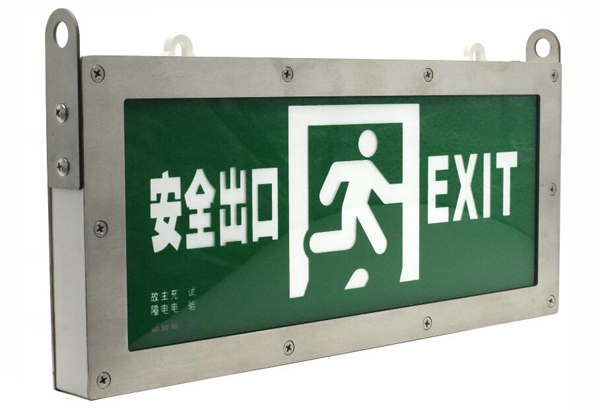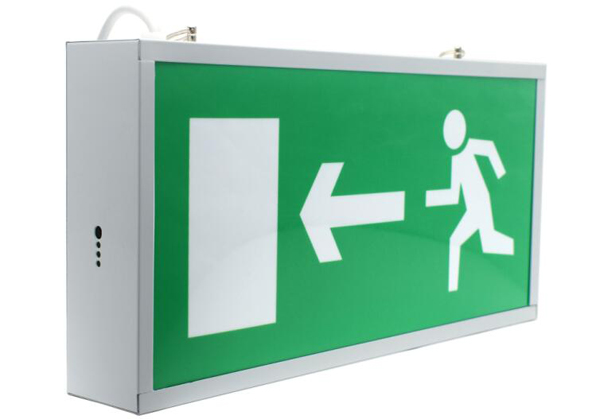Building codes require buildings to have emergency lighting in place. When the power goes out, emergency lights illuminate the way to an exit. Most buildings don’t have their own backup generator, so battery-operated emergency lights are installed. Batteries have a limited service life, so testing and replacing them will help make sure your emergency lights come on when they are needed.

Typically, a sealed lead acid battery has a service life of 2–3 years and a nickel cadmium battery could last up to 5-6 years. The service life is related to type of battery, ambient temperature, and other factors. There is no reliable way to tell how long a specific battery will last without testing it.

To help ensure their reliability, NFPA 101, Life Safety Code and the International Fire Code require battery-operated emergency lights to be tested as follows:
● Monthly functional test for 30 seconds
● Annual load test for 90-minutes.
Testing is conducted by a technician trained on the testing procedures.
Emergency lights have a test button for the 30-second test that shows the lamps work and the battery is connected. Pushing that button isn’t a valid test for battery’s capability. The 90-minute load-test assures that the battery provides power to the unit and will provide emergency illumination for the minimum 90 minute duration required by code.
Technicians that attend the Emergency Lighting Training Class, receive the required training that provides the necessary knowledge to perform the 90 minute test and determine when batteries need replacement. Technicians that successfully complete the program receive a certificate.

By testing and replacing batteries in exit signs and emergency lights, you’ll not only be improving the safety in every building that you visit, but you’ll be improving your bottom line.
Here’s an example using the 6V/4 Ah batteries (P/N PRB64) at a price of $30 and selling 4 batteries per day: 4 batteries per day x $30 per battery x 5 days per week x 50 weeks per year = $30,000 per year.
This is an example of how to determine sales.
So take a moment and plug in the price your company charges for an emergency lighting battery and the number of batteries that you’ll likely sell.
Since exit signs and emergency lights are the most neglected safety equipment in buildings, there are improvement opportunities in almost every building. Emergency lights are easy to service and you’ll not only increase profits, but you’ll be improving safety for building occupants.
Most emergency lighting units use batteries, which have a limited life and can fail without warning. The "charged" light on the unit may illuminate, but this does not guarantee that the light will illuminate in the event of a power failure.
What type of testing does the fire code require?
Fire codes require that emergency lights or illuminated exit signs be inspected and tested at least once a month. The test must include a 30-second test of the light.
An annual test is also required, and the light must operate for at least ninety (90) minutes on emergency power. Written records documenting the test must be kept for review by the Los Angeles State Fire Department or your insurance company.
Most emergency lights or exit signs have a small "Push to Test" button on the housing. You can test the bulb and battery by pressing and holding this button for thirty seconds. This method is feasible if you have a small number of units that are easily accessible. The light should illuminate and remain at the same brightness level for thirty seconds. If the light dims immediately, or if some of the bulbs do not illuminate, then you should contact us to replace the bulbs and/or batteries in the fixture.
For exit signs, you should also check that the sign illuminates properly when in normal power mode. For large numbers of devices or for annual ninety (90) minute tests, there is a second method that may work better. Find the circuit breaker or fuse that powers the emergency lights or exit signs. (If they are not properly labeled, you may need to contact an electrician.) The circuit breaker should be turned off and the lights observed to determine if they function properly during the ninety minute (annual) or thirty second (monthly) test period.
WARNING: If a computer or similar device is connected to the same circuit, you may want to make sure that the data is saved on the computer or similar device first.
Many defective batteries only hold enough charge to fully illuminate a bulb for a few seconds, but they quickly lose power. If you do not test for thirty seconds, you may find that the lights function properly every month, but when you really need them, they go out in a few seconds. By testing the lights for at least thirty seconds, you ensure that the batteries do not just have this "surface charge."
The 90-minute emergency lighting test, also known as the 90-minute battery load test, is an annual test required of commercial properties in most states to ensure that proper safety standards are being met.
This test must be performed by a qualified person. During a 90-minute emergency lighting test,
the power to the building will be turned off for 90 minutes to simulate a power outage. During this time, testers will keep a close eye on the emergency lighting and exit signs to ensure they maintain proper lighting levels throughout the test.
An annual 90-minute emergency lighting test is a critical part of ensuring your building is safe. It is
one of the most fundamental parts of complying with safety codes and should not be viewed as a major inconvenience, but rather a quick annual test that can save lives.
Increase Safety
Inspecting emergency lighting and exit signs annually improves the safety of your building.
By ensuring that your emergency lights stay on for at least 90 minutes, you can ensure that everyone in your building can see and safely exit the building during a power outage. Functioning emergency lights can also help first responders rescue people who may be trapped. Ensure your lights are working properly with this annual test.
Required by Law
In addition to being beneficial to your building's safety, NFPA requires an annual 90-minute emergency lighting test to ensure your emergency lighting is up to code. All commercial building safety codes require that emergency lighting be installed and tested annually. Most states require a full 90-minute test.
FAQ
A licensed electrician should be hired to test any type of emergency lighting circuit, such as LED emergency light conversion kits and circuits. The requirements for testing emergency lighting circuits are mentioned in the AS/NZS2293 standard. Therefore, only appropriately qualified personnel should test your emergency lighting.
All types of emergency lighting equipment should be tested at least once a month. The testing time should be long enough to ensure that the emergency lighting fixtures are working properly.
The cost of emergency lighting testing depends on the type of system and product, as well as the testing time. It is recommended that you choose a licensed and reputable contractor to test your emergency lights and be able to provide references.
For manual testing, you may be required to pay a call-out fee and a fixed fee based on the number of fittings on site or an hourly rate. Remember that there is a fee for the test alone, and there will be additional costs for maintenance or replacement of the product.
If you find that any fittings in your emergency light system are not working properly, please report the problem to the maintenance contractor or responsible electrician. Do not ignore these problems as some problems may pose a safety risk.
You can buy LED emergency light products from GODSON

 Ni-MH Battery C4700mAh 3.6V
Ni-MH Battery C4700mAh 3.6V Nickel Cadmium Nicd Battery Pack SC1800mAh 3.6V
Nickel Cadmium Nicd Battery Pack SC1800mAh 3.6V Ni-Cd Battery Pack D4000mAh 3.6V
Ni-Cd Battery Pack D4000mAh 3.6V Ni-Cd Battery Pack C2500mAh 3.6V
Ni-Cd Battery Pack C2500mAh 3.6V NICAD Battery Pack AA900mAh 3.6V
NICAD Battery Pack AA900mAh 3.6V LiFePO4 IFR18650 1600mAh 3.2V
LiFePO4 IFR18650 1600mAh 3.2V LiFePO4 IFR18650 1600mAh 6.4V
LiFePO4 IFR18650 1600mAh 6.4V Ni-MH Battery C4000mAh 3.6V
Ni-MH Battery C4000mAh 3.6V E-bike Battery 48V 10Ah JL-1
E-bike Battery 48V 10Ah JL-1 E-bike battery 48V 10Ah Qing Tian
E-bike battery 48V 10Ah Qing Tian